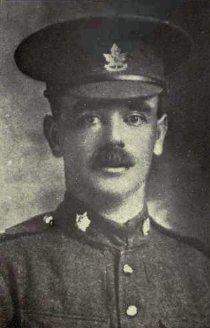| Revision as of 23:57, 3 January 2015 editRkonigs (talk | contribs)45 editsNo edit summary← Previous edit | Revision as of 11:16, 30 April 2015 edit undoKingbird1 (talk | contribs)Autopatrolled, Extended confirmed users, Pending changes reviewers, Rollbackers104,422 edits →Details: add refNext edit → | ||
| Line 26: | Line 26: | ||
| One of four soldiers to earn the Victoria Cross at the ], (the others were ], ] and ]), Pattison was 41 years old, and a ] in the ], ], during the ] when the following deed took place for which he was awarded the VC. | One of four soldiers to earn the Victoria Cross at the ], (the others were ], ] and ]), Pattison was 41 years old, and a ] in the ], ], during the ] when the following deed took place for which he was awarded the VC. | ||
| On 10 April 1917 at the Battle of Vimy Ridge when the advance of Canadian troops was held up by an enemy machine-gun which was inflicting severe casualties, Private Pattison, with utter disregard of his own safety, sprang forward and jumping from shell-hole to shell-hole, reached cover within thirty yards of the enemy gun. From this point, in the face of heavy fire he hurled bombs killing and wounding some of the crew, and then rushed forward overcoming and bayoneting the surviving five gunners. His initiative and valour undoubtedly saved the situation.<ref> |
On 10 April 1917 at the Battle of Vimy Ridge when the advance of Canadian troops was held up by an enemy machine-gun which was inflicting severe casualties, Private Pattison, with utter disregard of his own safety, sprang forward and jumping from shell-hole to shell-hole, reached cover within thirty yards of the enemy gun. From this point, in the face of heavy fire he hurled bombs killing and wounding some of the crew, and then rushed forward overcoming and bayoneting the surviving five gunners. His initiative and valour undoubtedly saved the situation.<ref>{{London Gazette|issue=30215|supp=yes|startpage=7908|endpage=|date=31 July 1917 |accessdate=30 April 2015}}</ref> | ||
| He was ] at ], ], on 3 June 1917. He is buried at La Chaudière Military Cemetery, France located 7 miles north of Arras (plot IV, row C, grave 14).<ref></ref> | He was ] at ], ], on 3 June 1917. He is buried at La Chaudière Military Cemetery, France located 7 miles north of Arras (plot IV, row C, grave 14).<ref></ref> | ||
Revision as of 11:16, 30 April 2015
| John George Pattison | |
|---|---|
 | |
| Born | 8 September 1875 Woolwich, London |
| Died | 3 June 1917 Lens, Pas-de-Calais, France |
| Buried | La Chaudière Military Cemetery, Vimy |
| Allegiance | |
| Service | Canadian Expeditionary Force |
| Years of service | 1916 - 1917 |
| Rank | Private |
| Unit | 50th Battalion, CEF |
| Battles / wars | World War I |
| Awards | Victoria Cross |
John George Pattison VC (8 September 1875 – 3 June 1917) was a Canadian recipient of the Victoria Cross, the highest and most prestigious award for gallantry in the face of the enemy that can be awarded to British and Commonwealth forces. Pattison was born in London, England and emigrated to Canada.
Details
Pattison enlisted at Calgary, Alberta on 6 March, 1916.
One of four soldiers to earn the Victoria Cross at the Battle of Vimy Ridge, (the others were Thain Wendell MacDowell, Ellis Wellwood Sifton and William Johnstone Milne), Pattison was 41 years old, and a private in the 50th (Calgary) Battalion, Canadian Expeditionary Force, during the First World War when the following deed took place for which he was awarded the VC.
On 10 April 1917 at the Battle of Vimy Ridge when the advance of Canadian troops was held up by an enemy machine-gun which was inflicting severe casualties, Private Pattison, with utter disregard of his own safety, sprang forward and jumping from shell-hole to shell-hole, reached cover within thirty yards of the enemy gun. From this point, in the face of heavy fire he hurled bombs killing and wounding some of the crew, and then rushed forward overcoming and bayoneting the surviving five gunners. His initiative and valour undoubtedly saved the situation.
He was killed in action at Lens, France, on 3 June 1917. He is buried at La Chaudière Military Cemetery, France located 7 miles north of Arras (plot IV, row C, grave 14).
The medal

His Victoria Cross is displayed at the Glenbow Museum in Calgary, Alberta.
References
- "No. 30215". The London Gazette (invalid
|supp=(help)). 31 July 1917. - KNOWN GRAVES OF HOLDERS OF THE VICTORIA CROSS IN FRANCE
External links
- Find-A-Grave profile for John George Pattison
- Lewisham War Memorials
- Biography on Canadian Forces website
This biographical article related to the military of Canada is a stub. You can help Misplaced Pages by expanding it. |